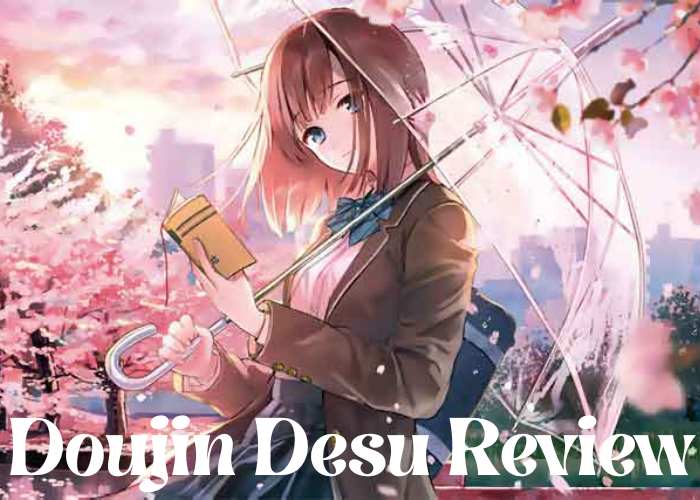For enthusiasts of Japanese pop culture, doujin desu represents a fascinating subculture that has grown significantly in popularity over the years. Doujinshi, often referred to as "doujin," is a term used to describe self-published works, primarily in the form of manga, novels, or games. These creations are not only a creative outlet for fans but also a testament to the vibrant community surrounding them.
The world of doujin desu is diverse and rich with unique stories, characters, and artistic styles. It serves as a platform for both amateur and professional creators to express their passion for various franchises, as well as original works. As you delve deeper into this subculture, you'll discover the immense creativity and dedication that goes into producing these works.
Understanding the significance of doujin desu requires an appreciation for its origins, evolution, and cultural impact. In this article, we will explore the history of doujinshi, its role in the global anime and manga community, and how it continues to thrive in today's digital age. Whether you're a long-time fan or a newcomer, this guide will provide valuable insights into the fascinating world of doujin.
Read also:Hanna Hilton A Comprehensive Guide To The Iconic Adult Film Star
Table of Contents:
- The History of Doujinshi
- Types of Doujinshi
- The Doujin Market
- The Doujin Community
- Legal Aspects of Doujinshi
- Doujin Events Around the World
- The Digital Revolution in Doujin
- Cultural Impact of Doujinshi
- The Future of Doujinshi
- Conclusion
The History of Doujinshi
The origins of doujinshi can be traced back to the late 19th century, during the Meiji era in Japan. At that time, doujin referred to small, self-published magazines or newspapers created by groups of writers and artists. These early publications were often focused on literature, politics, and social issues, reflecting the interests and concerns of the time.
By the 1970s, the term doujinshi began to take on its modern meaning, referring specifically to fan-created manga. The rise of popular manga series such as Dragon Ball and Sailor Moon fueled the growth of doujinshi as fans sought to expand upon their favorite stories and characters. This period also saw the establishment of major doujin events like Comiket, which provided a platform for creators to showcase their work.
Key Milestones in Doujinshi History
- 1975: The first Comiket (Comic Market) is held in Tokyo, marking the beginning of organized doujin events.
- 1980s: Doujinshi gains popularity as a medium for fan fiction and alternative storylines.
- 2000s: The internet revolutionizes the way doujinshi is created, shared, and distributed globally.
Types of Doujinshi
There are various types of doujinshi, each catering to different tastes and preferences within the fan community. Below are some of the most common categories:
Original Doujinshi
These are works created entirely from scratch by the artist or writer, featuring original characters and storylines. Original doujinshi provides creators with the freedom to explore their own ideas and concepts without being tied to existing franchises.
Fan Doujinshi
Fan doujinshi involves the use of characters and settings from established manga, anime, or video game series. These works often explore alternate scenarios, character relationships, or untold stories within the original universe. Popular franchises like Naruto and One Piece have inspired countless fan doujinshi over the years.
Read also:Luciana Paluzzi The Iconic Bond Girl And Her Enduring Legacy
Parody Doujinshi
Parody doujinshi takes a humorous or satirical approach to existing works, often exaggerating certain aspects for comedic effect. This type of doujinshi can serve as both entertainment and a commentary on the source material.
The Doujin Market
The doujin market has evolved significantly over the years, adapting to changes in technology and consumer behavior. Today, doujinshi can be found in physical form at conventions and specialty stores, as well as digitally through online platforms and marketplaces.
According to a report by the Japan External Trade Organization (JETRO), the global market for doujinshi is estimated to be worth several billion yen annually. This figure includes both sales at events like Comiket and online transactions through platforms like BOOTH and DLsite.
Challenges in the Doujin Market
- Intellectual property concerns: Creators must navigate the fine line between fan art and commercial exploitation.
- Competition: With the rise of digital platforms, creators face increased competition for attention and sales.
- Regional differences: Cultural and legal differences across countries can affect the distribution and reception of doujinshi.
The Doujin Community
The doujin community is a vibrant and supportive network of creators and fans who share a passion for self-published works. Members of this community often collaborate on projects, attend events, and provide feedback to one another in order to improve their craft.
Community events like Comiket play a crucial role in fostering connections and promoting doujinshi to a wider audience. These gatherings offer creators the opportunity to showcase their work, connect with fans, and exchange ideas with fellow artists.
Building a Strong Doujin Community
- Encourage collaboration: Work with other creators to develop joint projects and share resources.
- Participate in events: Attend conventions and exhibitions to network and promote your work.
- Engage with fans: Respond to feedback and maintain an active presence on social media platforms.
Legal Aspects of Doujinshi
While doujinshi is generally accepted as a form of fan expression, there are legal considerations that creators must be aware of. The use of copyrighted characters and settings in fan works can raise questions about fair use and intellectual property rights.
In Japan, the legal landscape surrounding doujinshi is relatively permissive, with many original creators tolerating or even encouraging fan-made works. However, this tolerance may vary depending on the specific circumstances and the preferences of the rights holders.
Best Practices for Doujinshi Creators
- Respect the original creators: Avoid creating works that could be seen as harmful or disrespectful to the source material.
- Limit commercialization: Focus on sharing your work rather than profiting excessively from it.
- Seek permission when possible: If in doubt, contact the rights holders for clarification or approval.
Doujin Events Around the World
Doujin events have become increasingly popular outside of Japan, drawing fans and creators from all corners of the globe. These gatherings provide an opportunity to experience the unique atmosphere and creativity of the doujin community firsthand.
Some of the largest international doujin events include:
- Comiket (Tokyo, Japan): The world's largest doujin convention, attracting hundreds of thousands of attendees each year.
- Manga Market (Warsaw, Poland): A major European event showcasing doujinshi and anime merchandise.
- Comic Fiesta (Kuala Lumpur, Malaysia): A Southeast Asian convention featuring a wide range of anime, manga, and doujinshi exhibits.
The Digital Revolution in Doujin
The advent of digital technology has transformed the way doujinshi is created, distributed, and consumed. Platforms like Pixiv, BOOTH, and DLsite have made it easier than ever for creators to share their work with a global audience.
However, the shift to digital also presents challenges, such as piracy and the need for creators to adapt to new business models. Despite these obstacles, the digital revolution has undoubtedly expanded the reach and accessibility of doujinshi, allowing fans worldwide to enjoy and support their favorite works.
Cultural Impact of Doujinshi
Doujinshi has had a profound impact on Japanese pop culture, influencing both mainstream media and grassroots creativity. Many professional manga artists and animators began their careers as doujinshi creators, honing their skills and building a fanbase before transitioning to the commercial industry.
In addition to its role in nurturing talent, doujinshi has also contributed to the global popularity of anime and manga. By providing fans with a platform to express their love for these mediums, doujinshi helps to sustain and grow the community around them.
The Future of Doujinshi
Looking ahead, the future of doujinshi appears bright, with new technologies and platforms continuing to expand its reach and influence. As digital tools become more accessible and sophisticated, creators will have even greater opportunities to innovate and experiment with their work.
At the same time, the doujin community must remain vigilant in addressing challenges such as copyright issues, piracy, and the sustainability of independent creators. By fostering a supportive and inclusive environment, the community can ensure that doujinshi continues to thrive for generations to come.
Conclusion
In conclusion, doujin desu represents a dynamic and ever-evolving subculture that celebrates creativity, passion, and community. From its humble beginnings as self-published magazines to its current status as a global phenomenon, doujinshi has left an indelible mark on the world of anime and manga.
We encourage readers to explore the fascinating world of doujinshi, whether by attending events, supporting creators, or even trying their hand at creating their own works. By doing so, you'll not only enrich your own experience of Japanese pop culture but also contribute to the continued growth and success of this vibrant community.
Don't forget to leave a comment or share this article with fellow fans who might appreciate learning more about the wonderful world of doujinshi. Together, let's keep the spirit of doujin desu alive and thriving!

